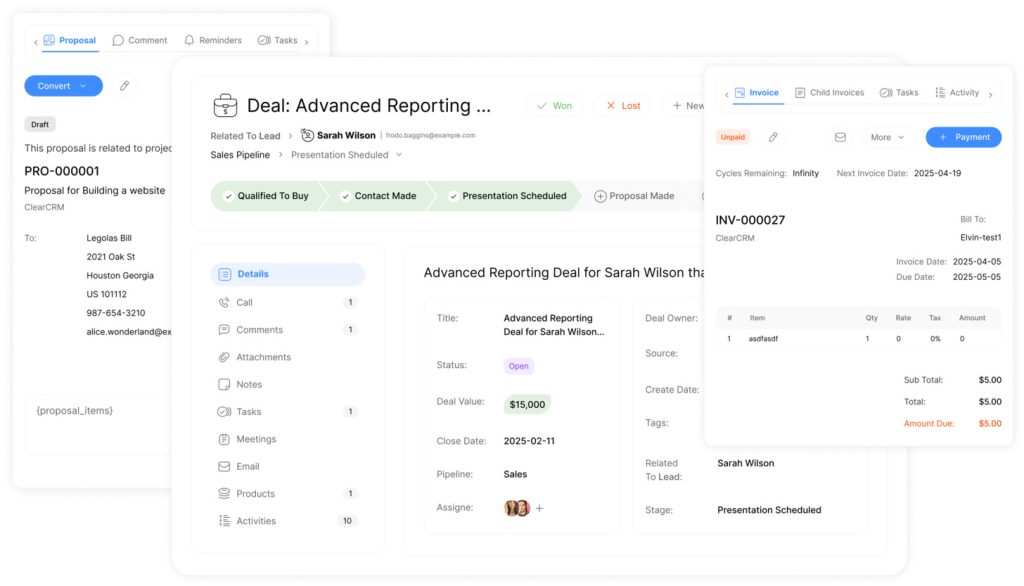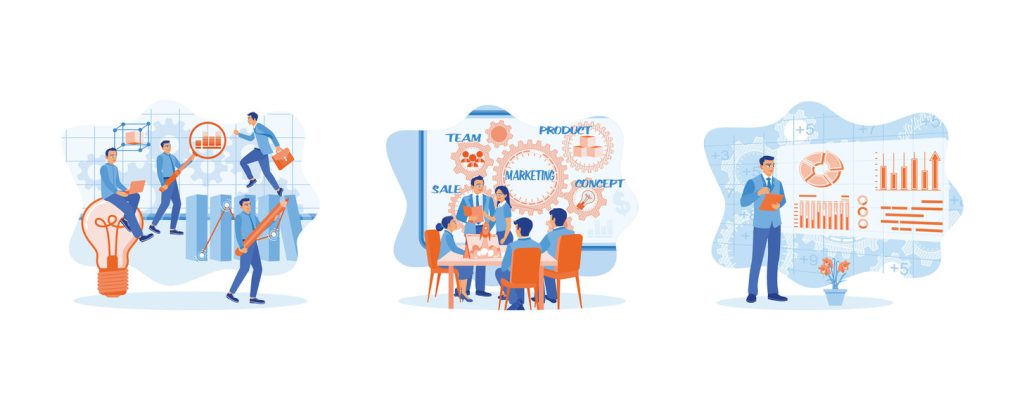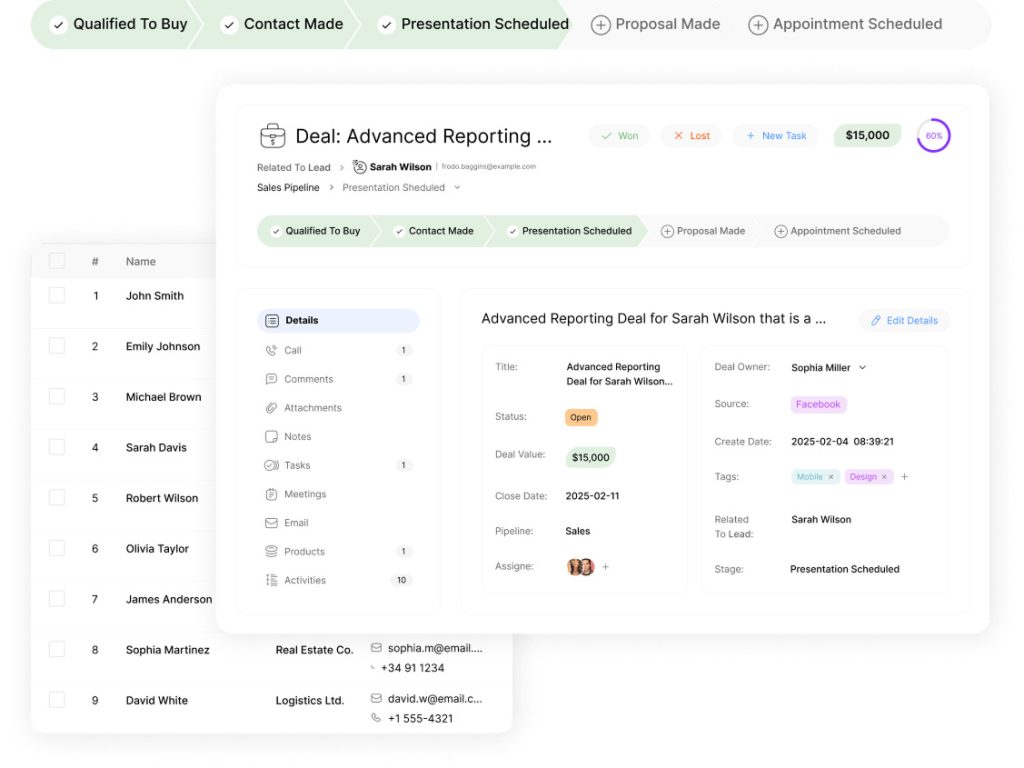Optimize Your Sales Process with Customizable Sales Pipelines

Modern businesses face growing pressure to convert leads efficiently. Without a structured approach, managing prospects often leads to missed opportunities and inconsistent results. A well-designed sales pipeline transforms chaotic workflows into organized strategies, giving teams clarity at every stage. Additionally, implementing effective sales order management tips can further enhance the efficiency of the sales pipeline. By streamlining processes and ensuring clear communication across teams, businesses can improve customer satisfaction and drive revenue growth. Ultimately, adopting these practices equips teams with the tools they need to convert leads into loyal customers. Mastering sales pipeline management not only increases conversion rates but also empowers teams to make data-driven decisions. By leveraging analytics, businesses can identify trends and adjust strategies proactively, ensuring they stay ahead of the competition. Ultimately, this commitment to continuous improvement fosters a culture of excellence that can elevate overall business performance. Furthermore, integrating automated tools to streamline the invoice matching process explained can significantly reduce errors and save time. This ability to reconcile invoices swiftly not only optimizes cash flow but also enhances the accuracy of financial reporting. By prioritizing efficiency in all aspects of sales and order management, businesses can position themselves for sustainable growth and lasting success.
These visual systems map each prospect’s journey, from initial contact to final purchase. By breaking the sales process into distinct phases, teams identify exactly where deals stall or accelerate. This visibility eliminates guesswork, empowering professionals to prioritize high-value tasks and allocate resources effectively.
Companies using tailored pipelines see measurable improvements in conversion rates and forecasting accuracy. For example, integrating CRM automation tools streamlines data tracking, ensuring no lead slips through the cracks. The result? Consistent revenue growth and stronger client relationships. Additionally, implementing email automation for sales followups allows companies to maintain regular communication with potential clients without overwhelming their sales teams. This strategy not only enhances engagement but also helps nurture leads effectively throughout the sales cycle. Ultimately, these technologies work in tandem to create a seamless experience that benefits both the business and its customers, driving sustainable growth. By adopting the best CRM tools for sales reps, organizations can further maximize their efficiency and reach. These tools empower sales teams with valuable insights and analytics, enabling them to prioritize high-potential leads and tailor their approaches. As a result, the combination of advanced technology and targeted strategies fosters an environment conducive to accelerated growth and enhanced customer satisfaction.
Structured pipelines also create accountability. Teams gain checkpoints to assess progress, refine tactics, and address bottlenecks before they escalate. This proactive approach helps businesses scale operations while maintaining control over complex workflows.
Key Takeaways
- Visual pipeline systems replace uncertainty with actionable insights at every deal stage
- Structured workflows increase team accountability and conversion rates
- Accurate forecasting becomes achievable through real-time progress tracking
- Tailored pipelines align with unique business models for maximum adaptability
- Identifying bottlenecks early prevents revenue leaks and operational delays
Understanding the Basics of Sales Pipelines

Effective revenue growth demands more than intuition—it requires clear visibility into deal progression. Visual systems convert chaotic workflows into organized strategies, enabling teams to act decisively at every phase.
The Role of Pipeline Visualization in Sales
Pipeline visualization turns abstract workflows into trackable milestones. For example, teams using color-coded stages instantly spot bottlenecks in their funnel. This approach replaces spreadsheets with dynamic maps showing which leads need immediate attention.
“Seeing our pipeline as a visual dashboard cut meeting times by 40% while improving forecast reliability.”
Consider these advantages of visual tracking:
| Criteria | Visual Pipeline | Traditional Approach |
|---|---|---|
| Deal Visibility | Real-time updates | Manual reporting delays |
| Coaching Efficiency | Targeted feedback | Generic advice |
| Forecasting Accuracy | Data-driven projections | Guesswork estimates |
Why a Structured Sales Process Matters
A defined sales process acts as a roadmap for reps. It standardizes how leads move from discovery to closure. Teams following structured stages reduce errors and accelerate decision-making.
Companies using this method report 28% faster deal cycles. Managers gain insights to redistribute resources before quarterly targets slip. The result? Predictable growth without micromanagement.
Mastering Customizable Sales Pipelines
One-size-fits-all approaches often miss the mark in dynamic markets. Businesses need systems that flex with their operational rhythms rather than forcing rigid frameworks. This is where adaptable pipeline design becomes a game-changer, turning generic workflows into precision tools.
Defining Pipeline Solutions for Your Business
Every company’s client journey differs. A B2B enterprise might require extended negotiation stages, while e-commerce teams prioritize rapid checkout transitions. Flexible pipeline software lets organizations mirror their actual workflow, not someone else’s template.
“Our conversion rates jumped 35% after aligning pipeline stages with client decision patterns.”
Advantages of Precision-Tuned Stages
Tailored phases eliminate wasted effort. Teams track metrics that directly impact their goals, like demo-to-proposal ratios or contract review timelines. Consider these differences:
| Standard Pipeline | Tailored Approach |
|---|---|
| Fixed progression steps | Adjustable milestones |
| Generic metrics | Goal-specific KPIs |
| Limited CRM sync | Deep workflow automation |
Key benefits include:
- Faster deal progression through stage alignment with buyer behavior
- Accurate forecasting using industry-specific conversion benchmarks
- Scalable processes that adapt to new products or markets
Companies using adaptable systems report 42% fewer stalled deals. They pinpoint bottlenecks earlier, like lengthy approval cycles, and automate repetitive tasks. The result? Resources focus where they drive maximum impact.
Mapping Out Key Pipeline Stages for Success
Successful revenue operations depend on precise navigation through critical phases. Distinct stages create checkpoints that guide teams from initial contact to closed deals. This structure transforms vague workflows into measurable progress.
Prospecting and Lead Qualification Techniques
Targeting the right leads separates thriving pipelines from stagnant ones. Effective strategies combine data analysis with industry insights to identify high-potential contacts. For example, using firmographic filters ensures teams prioritize accounts matching their ideal customer profile.
“Implementing BANT criteria (Budget, Authority, Need, Timeline) reduced our unqualified leads by 60% in three months.”
Key qualification practices include:
- Automated scoring systems that rank new leads based on engagement patterns
- Pre-call research templates to verify decision-maker access
- Regular audits to reclassify cold leads into nurturing campaigns
Engagement and Nurturing Best Practices
Building trust requires consistent, value-driven communication. Teams achieve better results by aligning content with specific stage requirements. Early-phase contacts receive educational resources, while late-stage prospects get comparative analyses.
| Effective Nurturing | Ineffective Approach |
|---|---|
| Personalized follow-ups | Generic mass emails |
| Challenge-focused content | Product-centric messaging |
| Multi-channel sequencing | Single-touch interactions |
Top performers use CRM alerts to maintain engagement rhythms without overwhelming contacts. This balance keeps leads moving forward while respecting communication boundaries.
Implementing Effective Sales Process Strategies

Revenue growth hinges on strategic alignment between planning and execution. Structured workflows provide teams with actionable blueprints to convert leads systematically. When processes match organizational rhythms, they eliminate guesswork and create repeatable success patterns.
Setting Clear Revenue Goals and Metrics
Specific targets transform abstract ambitions into measurable outcomes. For instance, a company needing $1M quarterly revenue might break this into:
- 150 qualified leads monthly
- 45% demo-to-proposal conversion rate
- 60-day average deal cycle
Teams thrive when expectations are tied to pipeline benchmarks. A sales process built around these metrics ensures resources focus on high-impact activities. Regular reviews using CRM tools designed for sales teams help track progress without manual reporting delays. Additionally, integrating the best CRM tools for sales managers allows for real-time data analysis, enabling teams to make informed decisions swiftly. By leveraging these advanced tools, organizations can streamline communication and enhance collaboration among team members. Ultimately, a data-driven approach fosters accountability and drives consistent performance towards achieving sales targets.
Aligning Sales Team Activities with Pipeline Stages
Every phase demands distinct actions. Early-stage prospecting requires research-heavy tasks, while negotiation phases prioritize contract customization. Misalignment creates friction:
| Aligned Activities | Misaligned Approach |
|---|---|
| Tailored discovery calls | Generic sales pitches |
| Stage-specific content delivery | Random email blasts |
| Pipeline-driven time allocation | Reactive firefighting |
This synchronization reduces wasted effort. Team members gain clarity on which tasks drive deals forward versus those that stall momentum. Quarterly workshops help refine activity lists as market conditions evolve.
Leveraging Tools and CRM Integration in Pipeline Management

Technology reshapes how teams track and prioritize opportunities. Centralized platforms replace fragmented spreadsheets, giving organizations real-time insights into every deal’s status. The right tools transform chaotic workflows into strategic advantage.
Choosing the Right CRM for Sales Pipeline Management
Not all systems handle complex pipeline management equally. Teams need platforms that scale with growth while staying intuitive for daily use. Key considerations include: Robust analytics and reporting capabilities are essential for tracking performance and identifying bottlenecks in the workflow. Additionally, integrating efficient pipeline management techniques helps teams optimize resources and enhance collaboration across departments. Ultimately, the right system can lead to improved productivity and a smoother operational flow.
- Custom stage configurations matching team workflows
- Integration with email, calendars, and third-party apps
- Mobile access for on-the-go updates
“Switching to a CRM designed for sales pipeline management cut our admin time by 12 hours weekly.”
Platforms like HubSpot and Salesforce offer robust tracking, but ClearCRM enhances customer management through built-in automation templates. This reduces setup friction while maintaining flexibility.
Automation and Data-Driven Enhancements
Manual data entry drains productivity. Modern systems auto-log calls, sync emails, and update deal stages based on preset triggers. These features eliminate blind spots while freeing reps to focus on selling.
| Manual Process | Automated Solution |
|---|---|
| Error-prone updates | Real-time sync across teams |
| Reactive adjustments | Predictive deal scoring |
| Delayed forecasts | Live performance dashboards |
Companies using these tools report 30% faster deal progression. Managers gain accurate forecasts without chasing status updates, making pipeline management a strategic asset rather than administrative overhead.
Optimizing Pipeline Stages and Managing Deal Flow
Unmanaged deal flow creates invisible revenue leaks that drain profits over time. Structured stages act as guardrails, ensuring teams complete critical tasks before advancing opportunities. This approach replaces chaotic workflows with predictable momentum.
Streamlining the Conversion from Leads to Deals
Effective stages function like progress checklists. For example, a “proposal sent” phase might require three follow-up calls before moving to negotiations. Teams eliminate bottlenecks by linking activities directly to advancement criteria rather than arbitrary timelines.
“Defining mandatory actions per stage reduced our stuck deals by 52% last quarter.”
Consider these comparisons:
| Structured Stage Criteria | Vague Stage Pitfalls |
|---|---|
| Contract review + legal approval required | “In negotiation” with no clear next steps |
| Three qualified decision-makers engaged | “Discovery” phase lacking measurable targets |
Tracking Activities to Prevent Pipeline Gaps
Real-time monitoring systems flag deals lingering too long in one stage. Teams receive alerts when key actions go incomplete, like unsigned proposals or unconfirmed demos. This prevents overlooked tasks from derailing timelines.
Best practices include:
- Setting maximum dwell times per phase based on historical data
- Automating escalation protocols for aging opportunities
- Reviewing stage transition patterns weekly to spot trends
Companies using these methods report 38% fewer stalled leads. Managers gain actionable insights to adjust training or reallocate resources before quarterly goals suffer.
Real-Life Strategies and Sales Pipeline Adjustments

Continuous improvement separates top-performing organizations from stagnant competitors. Refining pipeline stages requires testing, measurement, and adaptation. Analytics reveal which phases drive results—and which drain resources.
Using Analytics to Refine Your Pipeline
Data transforms guesswork into precision. Teams tracking cycle time per stage spot delays faster. For example, heatmaps showing prolonged negotiation phases prompt process audits. This approach reduces wasted effort across the funnel.
“Analytics transformed how we view our funnel—now we fix leaks before they drain revenue.”
| Effective Analytics Use | Limited Data Approach |
|---|---|
| Stage-specific conversion tracking | Generic performance metrics |
| Bottleneck heatmaps | Manual spreadsheet analysis |
| Automated trend alerts | Reactive problem-solving |
Overcoming Common Pipeline Challenges
Resistance to new systems often stalls progress. Companies succeed by pairing training with real-world examples. Role-based dashboards help teams adopt changes without productivity drops.
Best practices include:
- Weekly pipeline reviews to reinforce data-driven habits
- Automated alerts for aging deals exceeding time thresholds
- Cross-department feedback loops to align stages with operational needs
Organizations using these tactics report 31% faster cycle times. They replace rigid workflows with dynamic systems that evolve alongside market demands.
Conclusion
A well-structured sales pipeline transforms chaotic workflows into measurable revenue streams. When teams align stages with their core revenue activities, they create systems that adapt to real-world challenges rather than theoretical models. Regular reviews ensure these frameworks evolve alongside shifting market demands and organizational growth.
Organizations thrive when they treat their pipeline as a living system. Adjusting phase counts or criteria isn’t failure—it’s strategic refinement. Teams that embrace this flexibility shorten deal cycles, reduce friction, and forecast with confidence. Clear visibility into each lead’s journey turns guesswork into actionable insights.
The result? Consistent revenue growth powered by data-driven decisions. Companies identify high-impact activities, eliminate bottlenecks, and allocate resources where they drive maximum returns. By prioritizing pipeline accuracy over rigid templates, businesses build scalable operations ready for long-term success.

